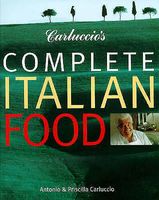Advertisement
Insalata
Salad
By Antonio Carluccio and Priscilla Carluccio
Published 1997
The word insalata comes from the old Italian verb insalare meaning ‘to add salt’ and is now the general term used for vegetables, green salad leaves and all manner of other ingredients combined together then dressed with olive oil, vinegar or lemon juice, salt and pepper. Italians eat salad with the main course as an accompaniment to meat, especially when grilled.
Insalata used only to refer to a collection of edible green leaves with lettuce as its foundation, but today there are literally hundreds of varieties of salad leaves, including chicory, radicchio, lamb’s lettuce, etc. A salad made up of green leaves with herbs, like rocket or mint or dandelion, is called an insalata verde (green salad), whereas a salad made of a mixture of salad ingredients including tomatoes and cucumber is called insalata mista (mixed salad). Salads can also be made with raw and shredded root vegetables, such as fennel, celeriac, carrots, Jerusalem artichokes, radishes or with diced cooked vegetable like green beans, carrots, fennel, courgettes, cauliflower. Salads are so flexible that almost any combination of ingredients or even a single ingredient can be called a salad, for example pasta salads and, say, insalata di carciofi (artichoke salad).



